Tag: AKI
Prediction of AKI in ICU Patients Based on Interpretable Machine Learning
The machine learning model described in this study is capable of accurately predicting the onset of AKI in ICU patients up to 24 hours in advance. Validated within the MIMIC-IV and MIMIC-III databases, the model demonstrates... read more
Textbook of Cardiorenal Medicine
This textbook provides a practical and board-driven resource to describe and define the emerging field of cardiorenal medicine. Covering all aspects of the topic with depth and relevance, this groundbreaking reference brings... read more
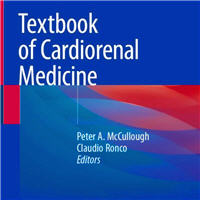
Fluid Bolus Therapy with 20% Albumin vs. Crystalloid-based Regimen
In this trial involving adult patients undergoing cardiac surgery with cardiopulmonary bypass, 20% albumin fluid bolus therapy (FBT) compared to crystalloid FBT did not decrease the occurrence of acute kidney injury (AKI).... read more
New Insights on CRRT for ARDS
In recent times, the applications of continuous renal replacement therapy (CRRT) beyond kidney‐related conditions have been progressively increasing, and its implementation in randomized controlled trials (RCTs) specifically... read more
Increased Lactate Dehydrogenase to Albumin Ratio Associated with Short-term Mortality in Septic ICU Patients
Elevated lactate dehydrogenase to albumin ratio (LAR) was found to be significantly associated with an increased risk of all-cause mortality at 28 and 90 days in septic patients. LAR was suggested to be promising biomarker... read more
Rethinking Energy and Protein Provision for Critically Ill Patients
In critically ill patients, we suggest that energy and protein be delivered progressively in stable or recovering patients. If a patient deteriorates, regardless of days spent in the ICU, low-dose energy and protein should... read more
Clinical Companion in Nephrology
The second edition of this educational book provides an updated resource on how best to discuss and manage acute and chronic presentations of renal diseases. All chapters have been reviewed and updated to reflect changes... read more
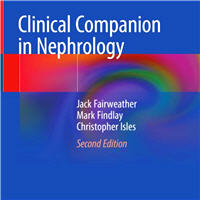
Critical Care Pediatric Nephrology and Dialysis
This book covers all key aspects of critical care in pediatric nephrology, including acute dialysis in sick children. It also provides detailed protocols for managing fluid and electrolyte balance and dialysis in children... read more
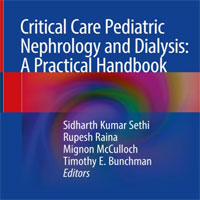
Risk Factors for Secondary Organizing Pneumonia and Acute Fibrinous and Organizing Pneumonia in Patients with COVID-19 Pneumonia
Based on our findings, we observed that age ≥50 years, diabetes mellitus, and severe hypoxemia on admission (SpO2 ... read more
Protocolized Fluid Balance Neutralization During CRRT
Bitker et al. report the GO NEUTRAL randomized clinical trial results, which investigated fluid balance neutralization guided by functional hemodynamic monitoring (FHM) protocol versus a standard of care in critically ill... read more
Adjusting risk of AKI for Time on Controlled Mechanical Ventilation in ARDS
The authors expressed concerns that the study did not account for certain key covariates, such as septic shock, right heart failure, or hypoxemia, which are believed to influence the development of AKI. We would like... read more
Plasma Bioactive Adrenomedullin Predicts Mortality and Need for Dialysis in Critical COVID-19
In this study, serial bio-ADM samples in the ICU had limited predictive power for mortality in critically ill COVID-19 patients when looking at absolute values. Still, relative changes over time showed a much better prediction.... read more
Early sodium bicarbonate therapy for critically ill patients with septic shock and acute moderate metabolic acidosis
In recent decades, septic shock has continued to be a life-threatening health problem around the world. Meanwhile, metabolic acidosis (MA) is also well known in critically ill patients, and even moderate metabolic acidosis... read more
Critical Care Nephrology and Renal Replacement Therapy in Children
Pediatric critical care nephrology is a complex and highly specialized field, presenting challenges and management strategies that are often quite distinct from those seen in adult practice. Therefore, it is high time... read more
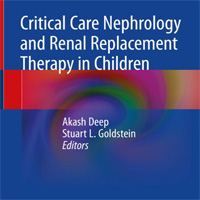
Core Concepts in Acute Kidney Injury
This comprehensive guide covers the causes, characteristics, and presentations of acute kidney injury (AKI), as well as prevention and treatment. The first part of the book features chapters on the epidemiology and diagnosis... read more
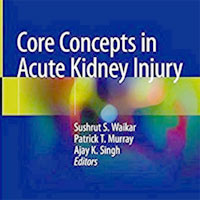
Endothelial Activation and Microcirculatory Disorders in Sepsis and Critical Illness
The endothelium is one of the largest organs in the human body and lines the blood vessels and microcirculation of all the vital organs. As such, it functions as a massive and critical surveillance system to orchestrate recognition... read more
AI to Predicting Mortality Risk in ICU Patients with AKI
To address the limitations of early acute kidney injury (AKI) prediction, researchers have increasingly turned to machine learning methods. However, the success of these models hinges on the selection of relevant features.... read more
Early vs. Delayed Enteral Nutrition in ICU Sepsis Patients
Early enteral nutrition may not affect mortality rates when analyzed using propensity score matching. However, our findings indicate that early enteral nutrition is associated with shorter ICU stays and a lower incidence... read more
Workbook on Renal Replacement Therapy in ICU (ISCCM)
This workbook focuses on renal replacement therapy in ICU. The incidence of acute kidney injury in critically ill patients is increasing steeply. Acute kidney injury in this setting is associated with high morbidity and mortality.... read more
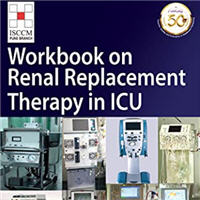
Incidence of AKI and attributive mortality in ARDS randomized trials
The development of acute kidney injury (AKI) after the acute respiratory distress syndrome (ARDS) reduces the chance of organ recovery and survival. The purpose of this study was to examine the AKI rate and attributable mortality... read more
Hepatorenal Syndrome in the ICU
Patients with cirrhosis are susceptible to develop acute kidney injury (AKI), a complication that occurs in up to 50% of hospitalized patients [80% in the intensive care unit (ICU)], and has been associated with increased... read more
Fluid Personalization and Vasopressor Decisions in Early Sepsis Management
In this randomized vignette survey study of US critical care clinicians, we found that fluid volume already received was associated with the largest changes in decisions to administer additional fluids or initiate vasopressors... read more









